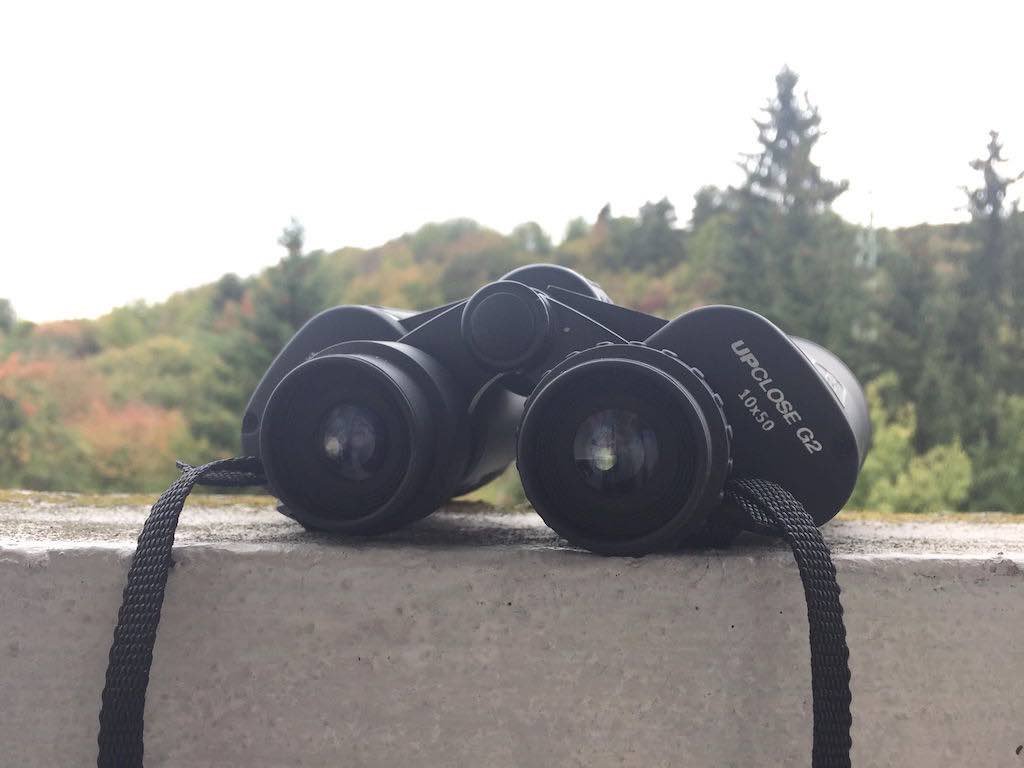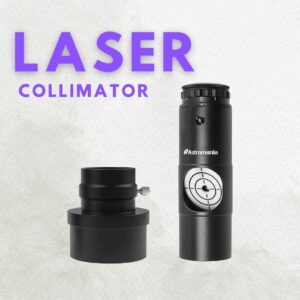This site contains affiliate links to products. I may receive a commission for purchases made through these links.
Telescopes often steal the spotlight, but stargazing binoculars present an intriguing alternative.
Astronomy binoculars are definitely worth buying if you are starting with stargazing or even if you already have a telescope. Binoculars will help you learn the night skies faster and provide close-ups of the moon craters plus, they are super easily portable.
This article dives into the realm of astronomical binoculars, evaluating their utility, performance, and value compared to traditional telescopes. By examining the features, cost, and suitability for various astronomical pursuits, we aim to provide a comprehensive guide to help you decide if stargazing binoculars are the right choice for your celestial explorations.
What are astronomy binoculars?
Stargazing binoculars, often referred to as astronomical binoculars, are specialized tools designed for celestial observation. They differ significantly from regular binoculars, which are typically used for terrestrial viewing like bird watching or sporting events. The primary distinction lies in their optical specifications and build quality, tailored to enhance the experience of observing the night sky.
Key features of astronomical binoculars
- Larger aperture: Astronomical binoculars have a larger aperture (the diameter of the front lens) compared to regular binoculars. This larger size allows more light to enter, which is crucial for viewing dim celestial objects in the night sky.
- Higher magnification: They often come with higher magnification power. While this enhances the ability to see distant objects in more detail, it also requires a steadier hand or the use of a tripod to stabilize the view.
- Wide field of view: One of the standout features of stargazing binoculars is their wide field of view. This allows for sweeping views of the sky, making them ideal for observing star clusters, the Milky Way, and other large astronomical objects.
- Long eye relief: Considering that some stargazers may wear glasses, astronomical binoculars typically offer long eye relief. This feature ensures comfortable viewing, even with eyewear.
- Quality optics with special coatings: High-quality lenses and prisms, often with special coatings, are used to maximize light transmission and enhance image brightness and clarity. This is particularly important for viewing faint objects in dark skies.
- Durability and build quality: Designed for outdoor nighttime use, these binoculars are generally more robust and may offer better resistance to moisture and temperature changes compared to standard binoculars.
Understanding these key features is essential in appreciating how astronomical binoculars are engineered to bring the wonders of the universe closer to our eyes. They offer a unique and often more accessible window to the stars, making them a valued tool for any stargazing enthusiast.
Top 3 binoculars for stargazing
1. Celestron UpClose G2 10×50 Porro Binocular
The Celestron UpClose G2 10×50 Binocular is a solid choice for both amateur stargazers and outdoor enthusiasts. Offering a 10x magnification and a 50mm aperture, these binoculars strike a balance between a wide field of view and detailed, up-close observations of distant objects.
The larger aperture size allows for better light gathering, making them suitable for low-light conditions and nighttime stargazing. They are relatively lightweight and comfortable to hold, which is a plus for extended viewing sessions. The build quality is decent for the price, providing durability without being overly bulky. However, users might find that a tripod is necessary for steadier views during long observations.
Overall, the Celestron UpClose G2 10×50 offers good value for its price point, making it an accessible option for beginners or those looking for a budget-friendly entry into astronomy or nature observation.
2. Celestron SkyMaster Giant 15×70 Binoculars with Tripod Adapter
The Celestron SkyMaster Giant 15×70 Binoculars, complete with a tripod adapter, are an excellent choice for those seeking a primary stargazing tool without investing in a telescope. These binoculars are at the upper limit of what can comfortably be held by hand, yet they manage to offer superb optics considering their price.
The 15×70 magnification provides crystal-clear images, making them ideal for extended night sky observations. They offer a more affordable and portable alternative to a high-quality telescope.
Despite the “giant” in their name, these binoculars are surprisingly manageable in size, balancing the need for powerful magnification with ease of use. This makes the SkyMaster Giant a standout choice for both amateur astronomers and casual stargazers looking for a reliable and impressive stargazing experience.
3. Celestron SkyMaster 25X100 ASTRO Binoculars
The final recommendation stands as a genuine astronomical instrument. Given its weight of 8.75 lbs, a tripod is essential; hand-holding these binoculars isn’t feasible. They feature individual eyepiece focusing, ensuring precise and optimal focus. With a powerful 25x magnification and a 100mm aperture, they provide maximum image brightness, closely rivaling telescopes in performance.
While the price may be comparable to a good telescope mounted on a tripod, their main appeal lies in portability. These binoculars, coupled with a small tripod, can easily fit in a backpack, making them an excellent choice for night-time adventures.
This combination of power and portability gives them a distinct advantage over traditional telescopes, especially for those who value mobility and ease of setup.
FAQ about astronomy binoculars
Let’s dive into the world of astronomy binoculars and uncover the answers to your burning questions.
How to focus binoculars?
Focusing binoculars is a straightforward process. First, adjust the central focusing ring, found on every pair of binoculars, to move both eyepieces simultaneously. Start by closing your right eye and using your left eye to focus the left eyepiece with the central ring until the image is sharp.
Are binoculars better than a telescope?
Binoculars, while not inherently superior to telescopes, offer distinct advantages in certain contexts. Telescopes generally outperform binoculars in terms of viewing capabilities, allowing for a more detailed observation of celestial objects. They also provide steadier images thanks to their mounts, some of which are motorized with auto-guiding features for enhanced tracking.
However, binoculars excel in terms of portability and ease of use, making them an excellent choice for casual stargazing, especially during activities like camping where stargazing isn’t the primary focus. While binoculars may not reveal as many objects as a telescope, they are a valuable addition to any astronomy enthusiast’s gear, complementing the more detailed exploration possible with a telescope.
Can you see planets and galaxies with binoculars?
While some planets can be spotted with the naked eye as bright points in the night sky, binoculars, due to their limited magnification, generally display planets only as slightly larger, brighter stars. High magnification, typically above 25x, is required to distinguish features like Saturn’s rings, which are a breathtaking sight through a telescope but challenging to resolve with standard binoculars.
For instance, only specific models like the Celestron SkyMaster 25X100 are capable of revealing such details. Jupiter, the largest planet in our solar system, appears as a small dot through binoculars, requiring magnifications of 100x or more to discern any details.
However, binoculars are quite effective for moon observation, offering clear views of its surface, and under dark, clear skies, they can also be used to enjoy deep space objects like star clusters and nebulae, though with less detail compared to a telescope.
You may also like: How Big of a Telescope Do You Need to See Saturn’s Rings?
How to interpret the numbers on astronomy binoculars?
Astronomy binoculars are labeled with numbers like 10×50, indicating magnification (10x) and aperture size (50mm). Higher magnification offers closer views but may require a tripod for stability, while a larger aperture enhances image brightness. Compact options like 10×50 are easier to handle and provide a balanced field of view, ideal for handheld use. Additional numbers signify the field of view, showing the visible area at a distance.
Maximizing your stargazing adventures with binoculars
In conclusion, investing in binoculars is a wise decision for anyone interested in astronomy or general observation. Their versatility allows for use both day and night, and they serve as an excellent complement to telescope gear or as a budget-friendly starting point for astronomy beginners.
However, if your primary use will be from a location like a balcony, backyard, or nearby trips, it’s worth considering a small telescope instead. Despite the numerous benefits of binoculars, a telescope can be a slightly better long-term investment for dedicated astronomical observation.
For instance, a compact and lightweight telescope, such as the Orion 10015 StarBlast 4.5 Astro with a Dobsonian mount, offers greater capabilities in viewing a wider array of celestial objects.
If you’re venturing into astronomy and planning to purchase your first stargazing instrument, a small telescope might be a more advantageous choice than regular binoculars, especially if you’re looking to explore the night sky in more detail.
Read also:
- Telescope vs Monocular: Which One’s Better for Stargazing?
- What Can You See With a 70mm Telescope? (Answered!)
- Celestron NexStar 130 SLT Computerized Telescope Review
- Are GoTo Telescopes Worth It? (My Real Experience)
- Is A Cheap Telescope Worth It? Under $100 (Astronomer Explains)
- Orion SkyQuest XT8 Review (#1 Beginner Telescope)







